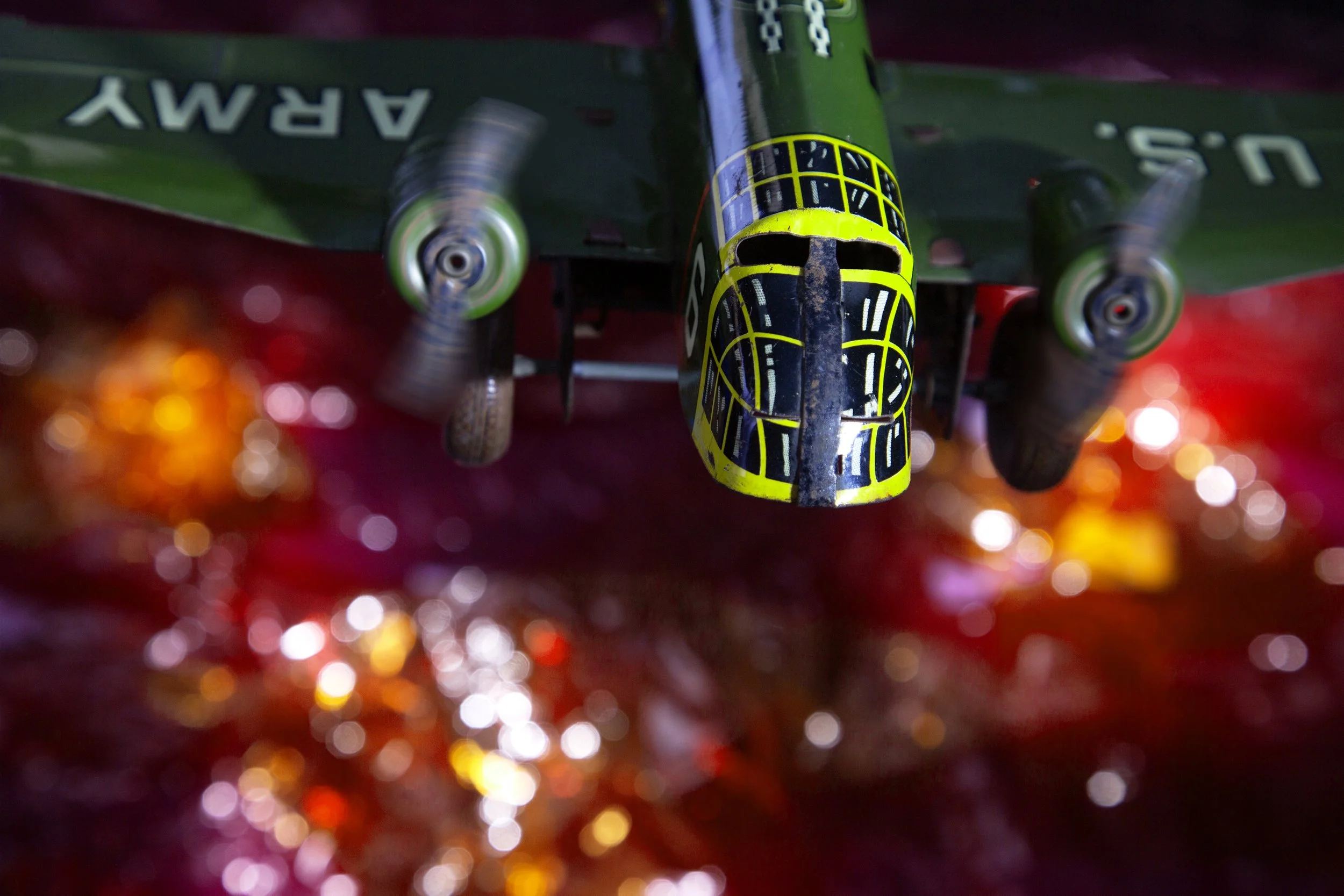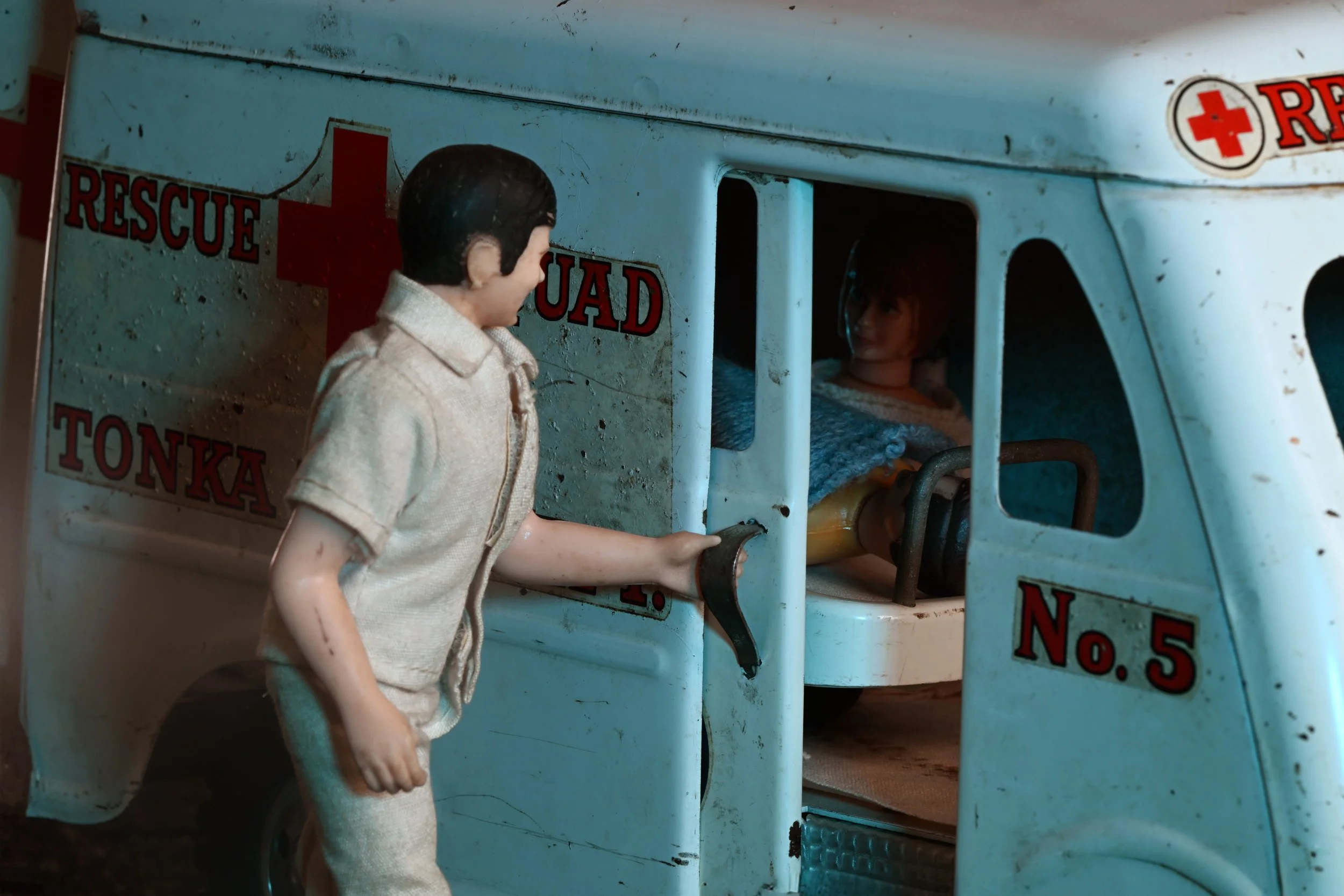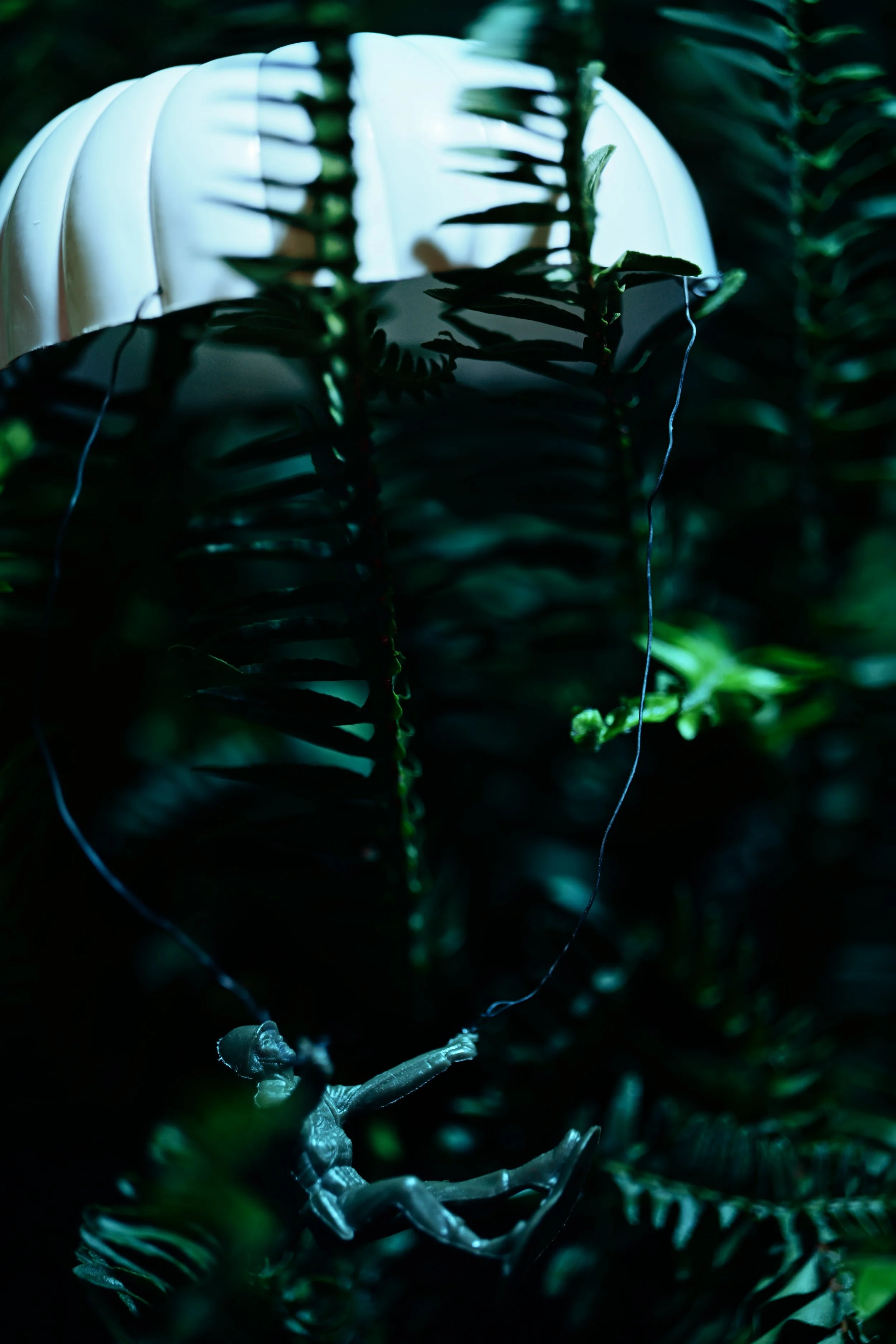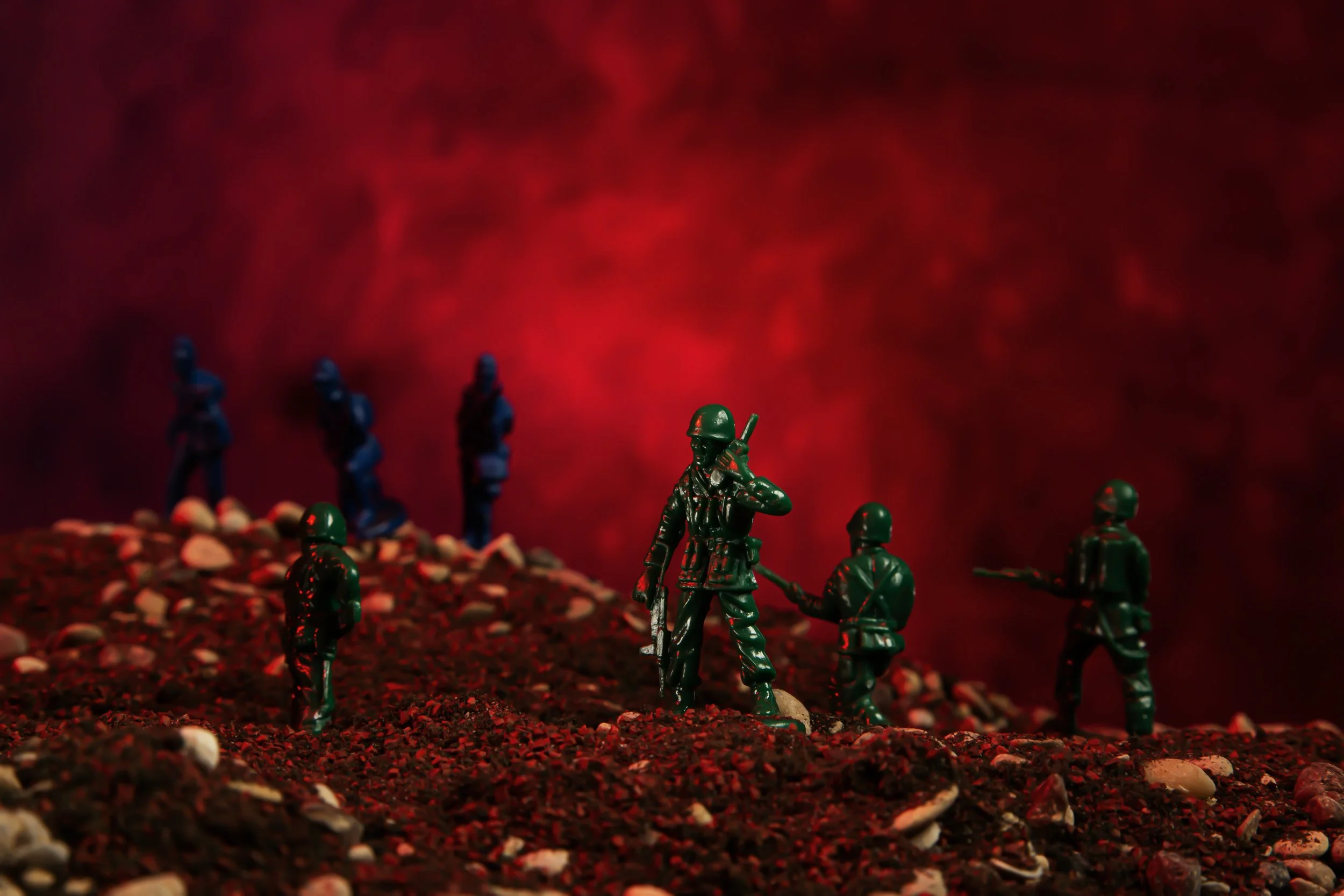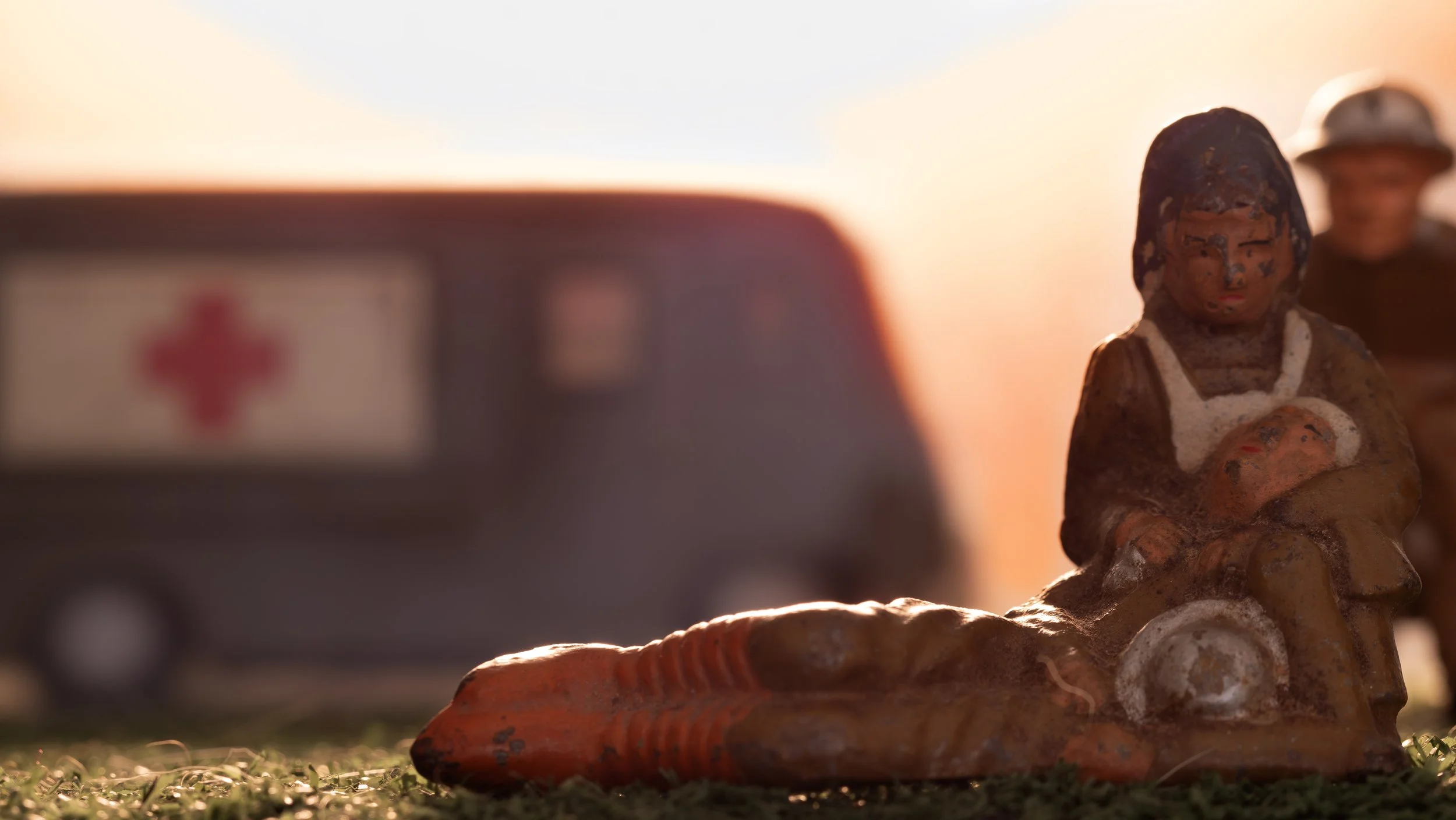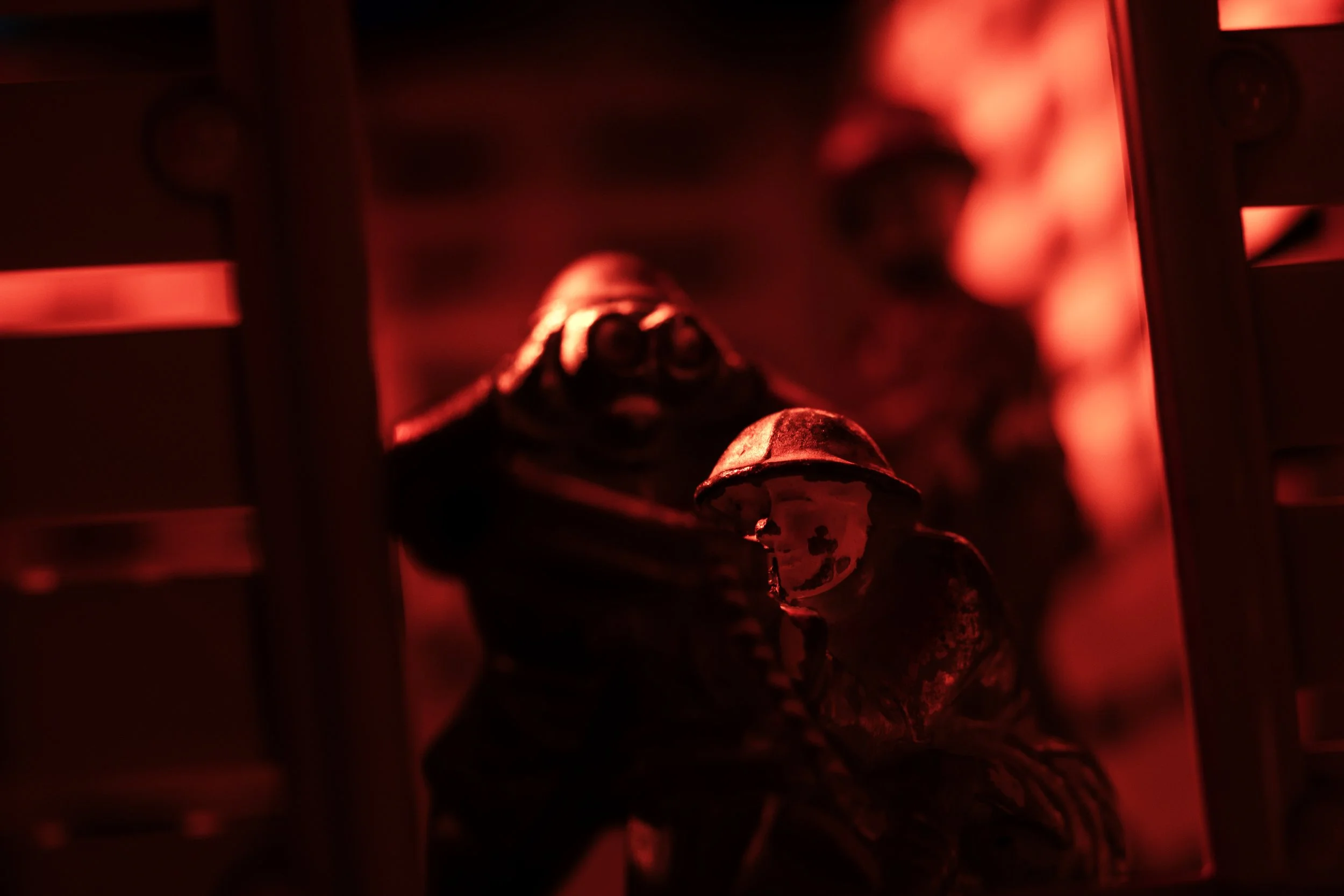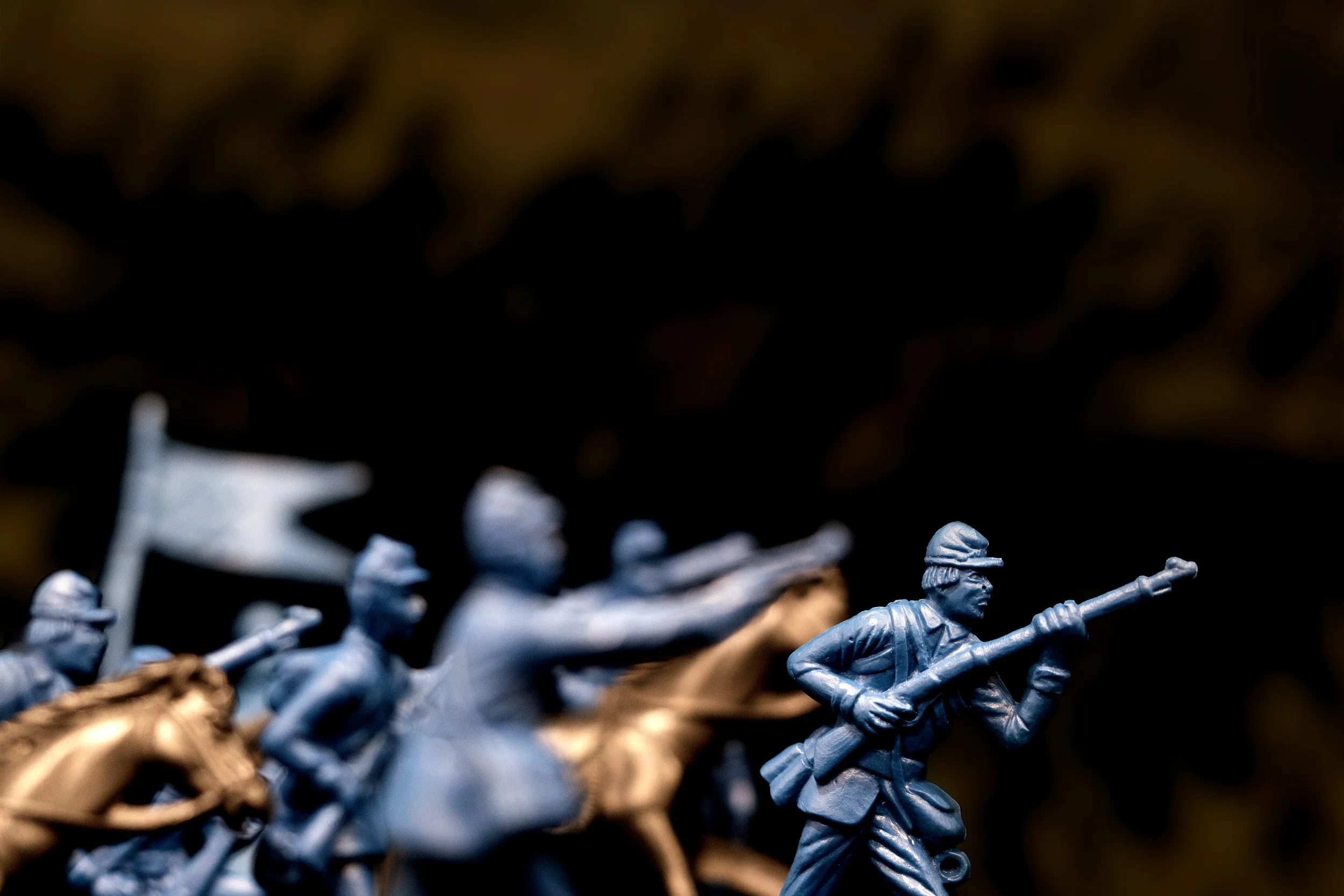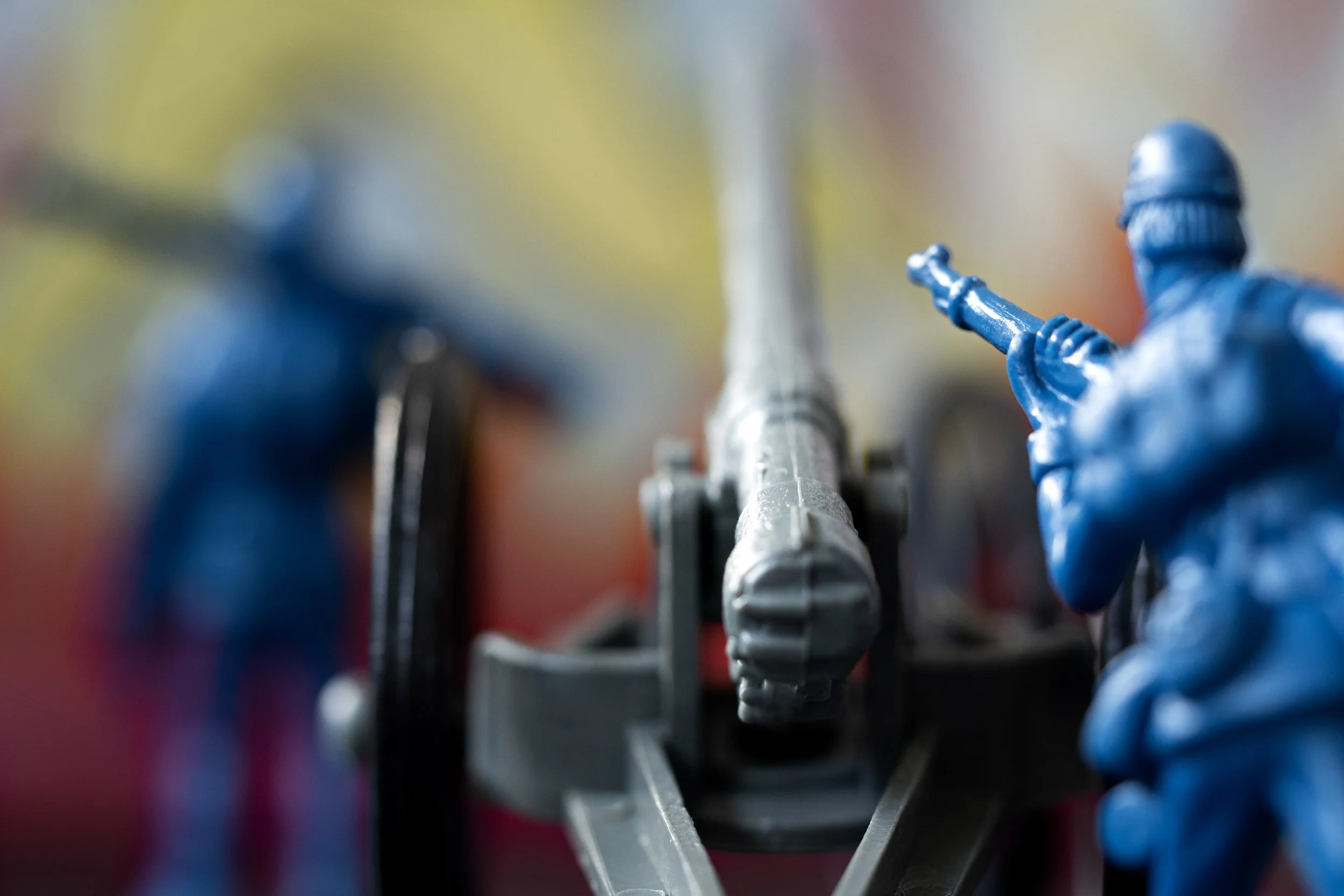Children’s toys—figures of soldiers, guns, tanks, and planes—often sensationalize and glorify war and conflict, embedding these themes into children’s play. Although easily dismissed as mere playthings, these toys reflect deeper societal norms that celebrate violence, shaping how children perceive the world. A striking aspect of these toys is their overwhelmingly male representation, reinforcing stereotypes that link masculinity with power, war, and heroism while sidelining other perspectives. By placing these familiar figures into scenes that echo real-life tragedies—war zones, destruction, and loss—, I aim to provoke reflection on why we, as a society, allow children to idolize violence through their toys. What does it mean for young minds when the innocence of play is intertwined with images of conflict and domination? These toys not only trivialize violence but also convey that war is admirable, shaping children’s understanding of heroism and power. This series doesn’t aim to accuse but to ask: What impact does it have on children to glorify violence through play? Is it the societal role of boys to protect their family and their country? Why do we, across cultures and nations, provide children with toys that reflect conflict, war, and power over others? Toy Soldiers is a photographic series where I seek to reveal the irony of male gender roles and the impact of play, war, violence, power, and heroism on our children.



